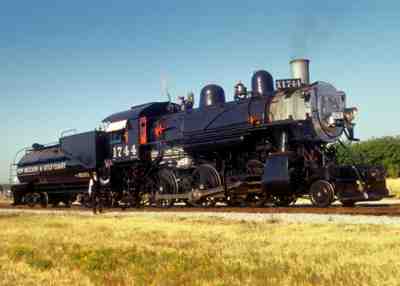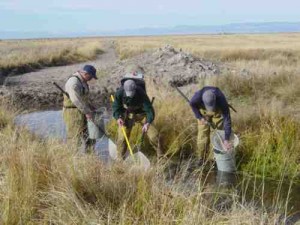Brief by Central Staff
Transportation – May 2007 – Colorado Central Magazine
Steam Returns
On Memorial Day weekend, the Rio Grande Scenic Railroad (it was the San Luis & Rio Grande last summer) plans to begin operating a steam-powered passenger train over La Veta Pass (or just plain Veta Pass, depending on whom you consult). Steam trains will run on weekends and holidays this summer, with diesels handling weekday excursions between Alamosa and the town of La Veta.
The locomotive, built in November of 1901 by Baldwin, started on the Southern Pacific in California, and has been rebuilt several times in its long career. Most recently it ran on the New Orleans & Gulf Coast Railway, pulling the Big Easy Steam Train.
It marks the return of steam to Alamosa, of course, but when did steam power depart the first time?

For regular passenger service, it was likely 1953 with the last run of the San Luis, a daily passenger train between Pueblo and Alamosa.
The Denver & Rio Grande Western was then converting all its standard-gauge operations to diesel locomotives. Standard-gauge steam remained until 1956 on the Creede branch — which likely explains why there’s still (or was, the last time we were through there) a water tank at South Fork.
Why the Creede branch?
Its trains were assembled in Alamosa, where narrow-gauge steam trains also originated. So Alamosa had the shop and service facilities for steam, which had been dismantled elsewhere in the D&RGW standard-gauge system at old division points like Salida, Minturn, and Montrose.
So for standard-gauge steam freight service, the last run from Alamosa was in 1956.
As for the narrow-gauge, the line from Alamosa via Antonito and Chama to Durango and Farmington, N.M. remained in freight service until 1967 or 1968 (depending on which source you consult), when the D&RGW was able to abandon the line.
The D&RGW kept the tracks from Alamosa to Antonito. The line had been three-rail so that the steam-powered narrow-gauge trains could use it too, but the middle rail was pulled up. The 64 miles from Antonito to Chama were sold to the states of Colorado and New Mexico, and operate to this day as the Cumbres & Toltec Scenic Railroad. Its narrow-gauge trains are steam-powered, of course, but their eastern terminus is Antonito, not Alamosa.
So it was sometime in the late 1960s, approximately 40 years ago, that the last steam-powered train of any sort pulled out of Alamosa.
The “new” steam locomotive burns oil, rather than coal. That was fairly common on the Southern Pacific of yore. The railroad’s major service area was California, where it’s easier to find oil than coal. An oil-fueled boiler also simplifies maintenance, since there aren’t any clinkers to shake out of the firebox.
However, even oil-fueled steam locomotives still require a lot of maintenance. And the railroad shop building in Alamosa was torn down sometime in recent years as the Rio Grande merged into the Southern Pacific which merged into the Union Pacific which spun off the San Luis Valley lines. So there could be a logistical challenge.




